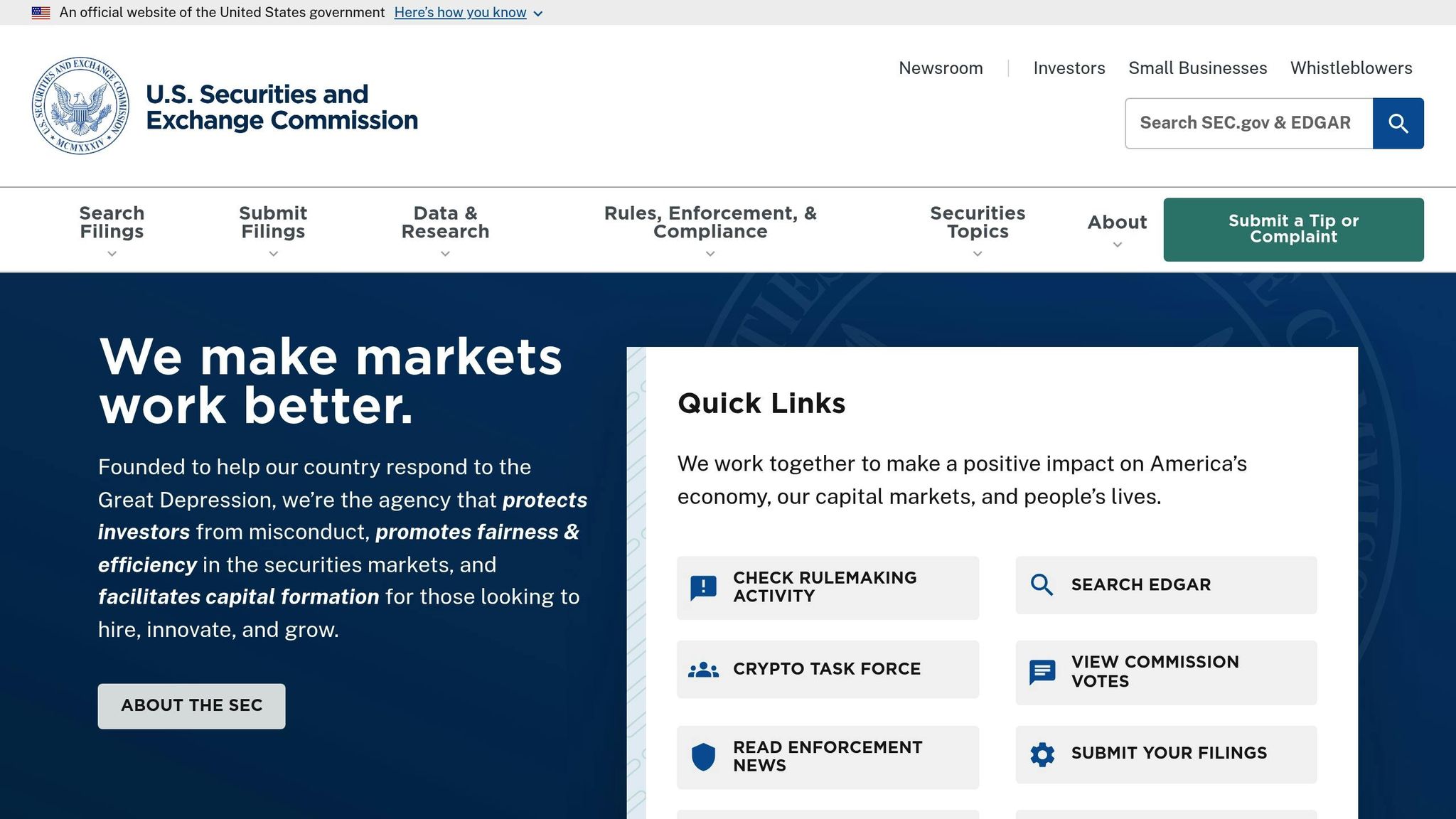Ultimate Guide to Private Placement Memorandums
Understand the essential components of Private Placement Memorandums, their legal requirements, and how to evaluate investment opportunities effectively.

A Private Placement Memorandum (PPM) is a key document used in private securities offerings. It provides vital details about an investment opportunity, helping investors make informed decisions. Here's a quick breakdown:
- What It Is: A legal document for private investments, often used in pre-IPO deals like SpaceX.
- Key Sections:
- Business Description: Operations, leadership, market position, and growth plans.
- Investment Terms: Share price, minimum investment, and rights.
- Risk Factors: Market, operational, financial, and regulatory risks.
- Fund Allocation: How raised funds will be used (e.g., R&D, operations).
- Legal Compliance: Must meet SEC rules (e.g., Regulation D) and state laws.
- Why It Matters: PPMs help investors evaluate risks, terms, and potential returns, especially in high-growth sectors like space technology.
Quick Tip: Always review PPMs for clear financial data, risk assessments, and compliance details before investing.
Private Placement Memorandums Explained - What is a PPM ...
Main Sections of a Private Placement Memorandum
Here’s a closer look at the key components that make up a Private Placement Memorandum (PPM):
Business Description
This part provides an overview of the company, its operations, and leadership to give investors a clear picture of its potential.
| Component | Details Included |
|---|---|
| Operational Model | Core activities, products or services offered, and position in the market |
| Leadership Team | Backgrounds, roles, and experience of executives |
| Key Financial Indicators | Revenue sources, growth figures, and financial statements |
| Market Position | Trends in the industry, competitive environment, and target audience |
| Strategic Growth | Plans for expansion, development goals, and key milestones |
Offering Terms
This section outlines the specifics of the investment opportunity.
| Term | Description |
|---|---|
| Share Price | Valuation and cost per share |
| Minimum Investment | The least amount required to participate |
| Share Class | Details on rights and privileges tied to the offered securities |
| Lock-up Period | Restrictions on when shares can be sold or transferred |
| Exit Strategy | Possible liquidity events and estimated timelines |
Risk Assessment
This section highlights potential challenges and uncertainties investors should consider:
- Market Risks: Factors like competition and broader economic conditions
- Operational Risks: Issues tied to technology, supply chain disruptions, or key personnel
- Financial Risks: Concerns about funding needs and cash flow management
- Regulatory Risks: Compliance requirements and potential legal changes
Fund Allocation
Here’s how the proceeds from the offering are typically distributed:
| Category | Description |
|---|---|
| Research & Development | Funding for new products or improvements |
| Operations Expansion | Capital to increase capacity or scale operations |
| Marketing & Sales | Resources for attracting and retaining customers |
| Working Capital | Funds for day-to-day operational needs |
| Administrative | Costs associated with managing the organization |
Investment Requirements
To participate, investors must meet these criteria:
- Accredited Investor Status: Must satisfy SEC guidelines for accreditation
- Required Documentation: Includes necessary forms, certifications, and verification steps
- Investment Timeline: Key dates, funding deadlines, and closing procedures
- Due Diligence: Access to additional information and verification opportunities
These sections create a comprehensive guide for investors, providing the foundation needed to evaluate the offering effectively.
Legal Requirements for PPMs
A Private Placement Memorandum (PPM) plays a crucial role in protecting both issuers and investors in pre-IPO transactions. To achieve this, PPMs must comply with federal and state securities laws, ensuring all parties avoid legal complications.
SEC Rules for Private Offerings

The Securities and Exchange Commission (SEC) provides clear rules for private offerings under Regulation D. These rules outline how companies can raise funds without registering their securities with the SEC.
| Regulation | Key Requirements | Investor Limitations |
|---|---|---|
| Rule 506(b) | Prohibits general solicitation | Unlimited accredited investors; up to 35 non-accredited investors |
| Rule 506(c) | Allows general solicitation | Accredited investors only, with strict verification processes |
| Regulation A+ | Two tiers ($20M and $75M limits) | Open to both accredited and non-accredited investors |
These guidelines form the backbone of legal compliance, supported by additional documentation and adherence to state laws.
Meeting Legal Standards
PPMs must meet several legal standards to ensure compliance with both federal and state regulations.
1. Mandatory Disclosure Requirements
A compliant PPM must include:
- Detailed information about business operations and financial statements
- A description of the securities being offered
- Clear explanations of investment risks
- Background information on the management team
- How proceeds from the offering will be used
2. State Securities Laws (Blue Sky Laws)
Companies must also meet state-specific rules in each state where securities are offered. This involves:
- Filing for registration or exemption in each relevant state
- Providing additional disclosures beyond federal requirements
- Meeting state-specific investor qualification standards
3. Documentation Standards
Accurate and thorough documentation is essential. This includes:
- Full disclosure of all material facts and risks
- Subscription agreements
- Investor questionnaires for accreditation verification
- Detailed records of all communications with potential investors
4. Ongoing Compliance Requirements
Issuers are responsible for several ongoing tasks to maintain compliance:
- Filing Form D with the SEC within 15 days of the first sale
- Reporting any material changes promptly
- Keeping detailed records of investor interactions
- Following financial statement presentation rules
- Enforcing resale restrictions and transfer limitations
PPMs for Pre-IPO Deals
Pre-IPO investments require a mix of legal precision and clear communication. Private Placement Memorandums (PPMs) must effectively outline a company's market position, growth prospects, and compliance with regulations. These elements, combined with a strong focus on risk assessments and clear data presentation, are critical for assessing pre-IPO opportunities.
Company-Specific Features
PPMs for pre-IPO companies need to detail the organization's market position and growth potential. For fast-growing tech firms, this typically involves the following:
| Key Component | Description | Purpose |
|---|---|---|
| Market Analysis | Breakdown of the target market size and growth rate | Highlights market potential |
| Technology Stack | Overview of proprietary technology and competitive advantages | Shows barriers to entry |
| Growth Metrics | Revenue growth, user acquisition, and performance indicators | Demonstrates business momentum |
| Funding History | Details of past investment rounds and notable backers | Builds credibility |
When reviewing these opportunities, investors should focus on:
- The context of the current funding round
- Recent operational achievements
- Broader market trends
- Expansion strategies
- Estimated exit timelines
Clear Information Design
Once legal and structural requirements are met, presenting data in a clear and accessible way becomes essential. Successful PPMs often use these strategies:
- Visual Data Representation
Key metrics and projections are often displayed visually to enhance comprehension. Common examples include:
- Revenue growth charts (historical and projected)
- Market share analysis graphs
- Trends in customer acquisition costs
- Breakdown of unit economics
- Cash flow projections
- Risk Assessment Matrices
PPMs provide a structured overview of potential risks and mitigation strategies. These typically cover:
- Market-specific risks
- Operational challenges
- Competitive pressures
- Regulatory hurdles
- Technology-related risks
- Financial Summary Tables
Financial data is often condensed into easy-to-read tables, summarizing:
- Historical performance metrics
- Growth forecasts
- Key financial ratios
- Capital structure details
- Valuation methods
For those exploring pre-IPO investments in the space technology sector, the SpaceX Stock Investment Guide is a helpful resource. It offers insights into aerospace-specific PPM elements, such as funding trends and market analysis.
Summary
Main Points
Private Placement Memorandums (PPMs) are crucial for making informed decisions in private investment opportunities. Here are the key components investors should carefully review:
| Component | Key Considerations |
|---|---|
| Legal Framework | SEC compliance and regulatory adherence |
| Financial Details | Revenue forecasts and valuation metrics |
| Risk Assessment | Potential market, operational, and competitive risks |
| Investment Terms | Minimum investment amounts and lock-up periods |
By understanding these aspects, investors can make more informed and compliant decisions.
Explore the SpaceX Stock Investment Guide

For those interested in pre-IPO investments in the space technology sector, the SpaceX Stock Investment Guide offers targeted resources to refine your investment strategy. This platform provides in-depth insights into:
- Market Timing Strategies: Learn how to identify the best entry points based on funding rounds and company milestones.
- Valuation Insights: Access detailed breakdowns of company valuations and growth indicators.
- Industry Trends: Stay updated on developments in the space technology market and their potential impact on investment opportunities.
The guide also features an investor club that offers free access to exclusive updates. Members receive regular briefings on market trends, funding events, and key company announcements - helping them stay ahead in the dynamic pre-IPO investment landscape.
Carefully reviewing PPMs and keeping up with market insights is essential for making smart investment choices.
Comments ()